A sepulchral hymn rises out of the gloom, sung in burly Orthodox style. Ethereal boys’ voices join in. Light ripples across a shadowy bulk centre stage in lurid tropical fishtank colours. Gradually lips, cheekbones, ears are illuminated, revealing the vast sculpted head of a man. In tiered golden splendour behind – is this colosseum, church or theatre? – figures group together dwarfed by this Ozymandian face.
The arresting vision ignites an exemplary evening. This production of Karol Szymanowski’s Król Roger (King Roger), a premiere at the Royal Opera House, is bold, clear and purposeful, a triumph for the first artistic partnership of Kasper Holten, director of opera, and music director Antonio Pappano, who last week became the 100th recipient of the Royal Philharmonic Society Gold Medal, the latest in a hallowed line of musicians stretching back to Brahms and Elgar. We are lucky to have him.
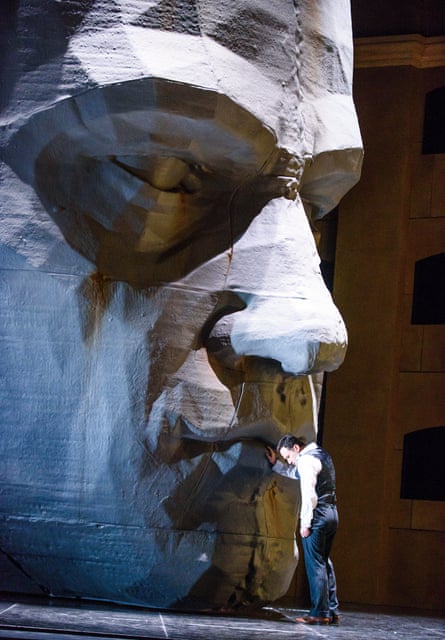
King Roger (1926) is a one-off, not least because it was Szymanowski’s only full-length opera. The 90-minute work opens at twilight and ends at sunrise, providing a blazing climax with an aria, sung by Roger himself, to the sun. Simon Rattle, Mark Elder and others have championed it as a masterpiece. My lingering reservations are more to do with the superannuated text, written by the composer with help from his cousin, Jaroslaw Iwaszkiewicz, its heady symbolism plucked from a Persian garden.
Inspired by Euripides’s The Bacchae, the story is not dramatic. Roger may be a devout 12th-century king of Sicily, but in this mind-body tug-of-war he is Everyman. Trouble arrives in the form of a young stranger preaching pantheistic pleasure. This gorgeous, Dionysian goatherd – with “eyes like stars and a smile full of mystery”, just the sort of Christ-Bacchus beauty Caravaggio might have painted – preaches of a god as beautiful as himself.
In contrast to the music of court and church, respectively stern and ambiguous, the Shepherd’s music is beguiling and whole-toned. A cor anglais weaves chromatic arabesques around his distinctive vocal line, evocatively sung by the Albanian tenor Saimir Pirgu. The king’s wife, Roxana (Georgia Jarman), is susceptible to the young man and sings a luscious aria urging her husband, too, to yield. Nearly tempted, and after a sacrificial bonfire and symbolic burning of books, Roger stands firm. The conclusion, however, is far from redemptive.
Always an outsider, Szymanowski (1882-1937) trod an isolationist path. Travels in the Mediterranean and north Africa broadened his cultural horizons, loosening the shackles of his noble Polish-Ukrainian past. His musical tastes were singular. He worshipped Wagner, blew hot and cold over Richard Strauss, at first embraced then rejected Schoenberg and had enduring enthusiasm for Scriabin and Debussy. The sweep and intricacy of his orchestration are richly displayed in King Roger, which thunders and glitters with two harps and excess of woodwind, low brass and tuned percussion and plenty else besides.
Steffen Aarfing’s set, with exceptional lighting by Jon Clark and choreography (a discreetly effective orgy) by Cathy Marston, is both functional and visually arresting. The stone head, in Act 2, revolves to show a complex interior of the mind in the manner of Fritz Kahn, the German physician-artist whose “medical concept” drawings of the 1920s mixed surrealism with prototype infographic. The Polish baritone Mariusz Kwiecien, in the title role, was a sympathetic, troubled presence. Little could we have guessed, until Holten announced as much before the third act, that he was ailing. He sounded secure and gleaming. Kim Begley, Alan Ewing and Agnes Zwierko shone in cameo roles.
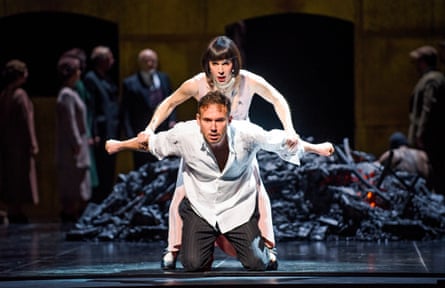
Szymanowski’s love of Ravel and Scriabin was reflected in the Royal Opera House Orchestra’s first symphonic concert with Pappano, which will become an annual event. They seemed unfazed by taking the limelight, and played a turn-of-the-century programme – plus Bernstein’s 1944 jazzy ballet Fancy Free – with aplomb. Chausson’s honeyed Poème de l’amour et de la mer would have carried us all off to la-la land were it not for the cool sensuality of Anna Caterina Antonacci. The concert ended with Scriabin’s Poem of Ecstasy (1908), a symphonic outpouring and a call, according to the first programme note, to the Joy of Liberated Action. The restless, trilling strings, sumptuous brass and, especially, that endlessly repeated, rising trumpet figure, fitted perfectly with the soundworld of King Roger. It was mightily ecstatic. I rushed home to get out my birch twig scourge.
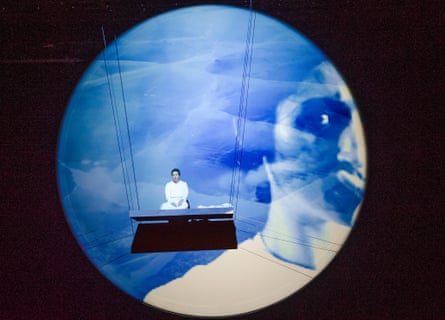
Three operas had world premieres, two in the Linbury Studio. Both Atthis, by Georg Friedrich Haas (who has a main-stage ROH premiere next season), and The Virtues of Things, by Matt Rogers to a text by Sally O’Reilly, had strengths, powerfully enhanced by excellent productions. Atthis, settings of Sappho translated by Ruth Padel, winningly sung by Claire Booth, looked stunning in Netia Jones’s exquisite monochrome production – the chief justification for staging this song cycle.
The Virtues of Things was set in the workshop of a family of propmakers, still using traditional tools and methods. The arrival of a digital-age freelance brings their world crashing down. The bristling score, expertly played by a reduced Aurora Orchestra conducted by Richard Baker, was full of ingenuity. There were too many words, but it could all be easily sharpened up.
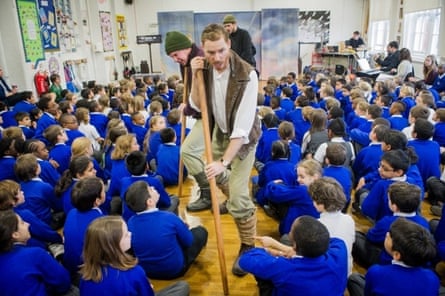
English Touring Opera did the near impossible by getting a bunch of seven- to 10-year-olds from various south London schools to watch a new opera by Russell Hepplewhite about Ernest Shackleton’s expedition to the Antarctic. It was deftly done, in the great hall of Dulwich College, and in the presence of Shackleton’s granddaughter, with highest musical standards, but quite complicated to follow. I can’t say every child was glued to the action, or to the floor. It’s amazing how far you can slide while sitting cross-legged. But in the coming weeks, as part of ETO’s 2015 spring tour, Shackleton’s Cat will be seen by 5,000 children in 38 performances, a feat worth cheering.
I hope the acoustics are better elsewhere, the narration delivered more emphatically, and that the children are given more of a chance to sing their all-join-in songs they had prepared in advance and were clearly longing to repeat several times over. At the end, of four questions to the performers there was time to answer, three were about death. How did Shackleton die? How did his fellow explorer McNish die? How, crucially, did Mrs Chippy the cat – the only female in the cast, though, whoops, she turned out to be male too – die? There’s no pulling the wool over the eyes of Key Stage 2 audiences. A bit more gore and they would have been really hooked.
Star ratings (our of 5)
Król Roger *****
Orchestra of the Royal Opera House/Pappano ****
Atthis ***
The Virtues of Things ***
Shackleton’s Cat ***
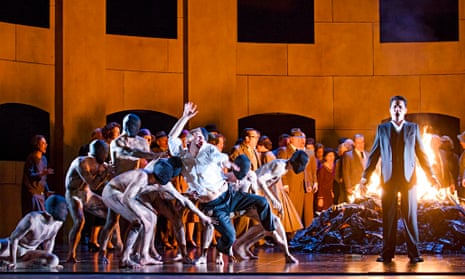
Comments (…)
Sign in or create your Guardian account to join the discussion